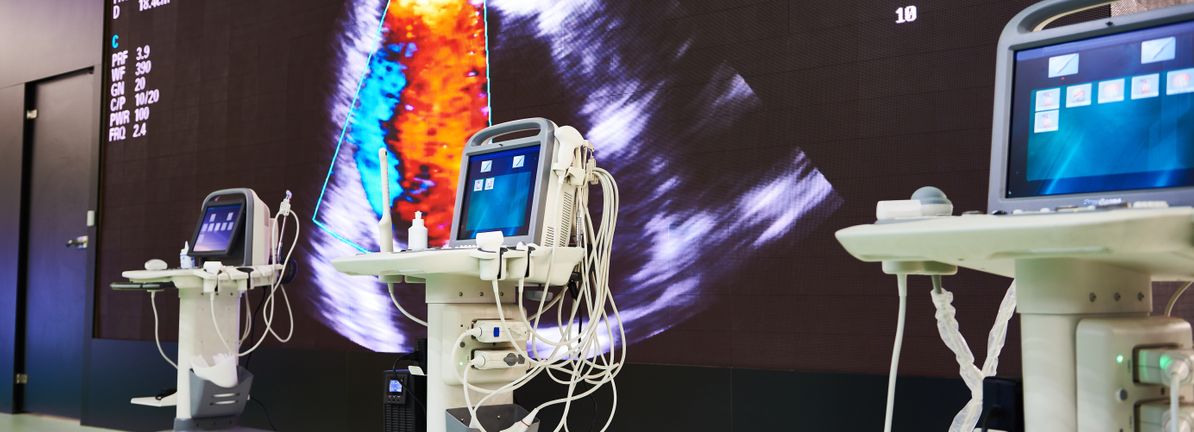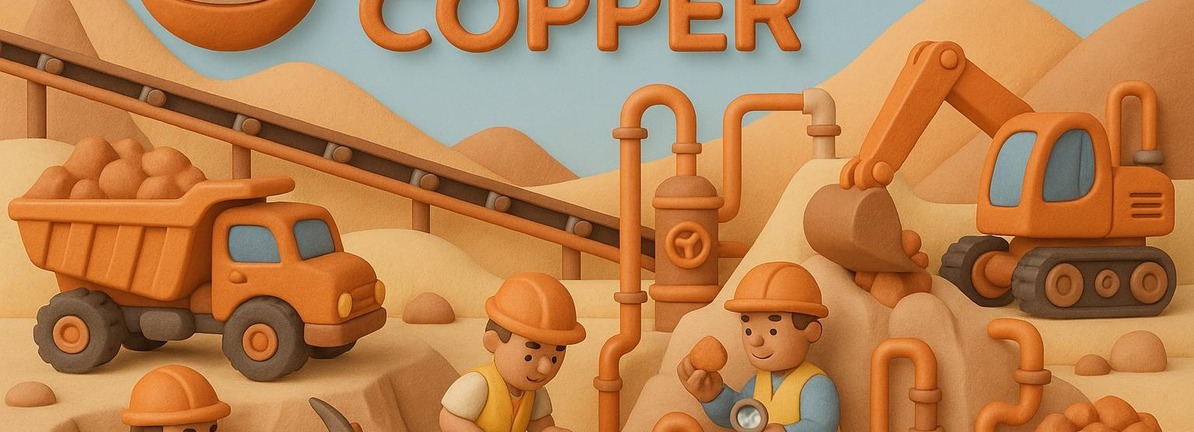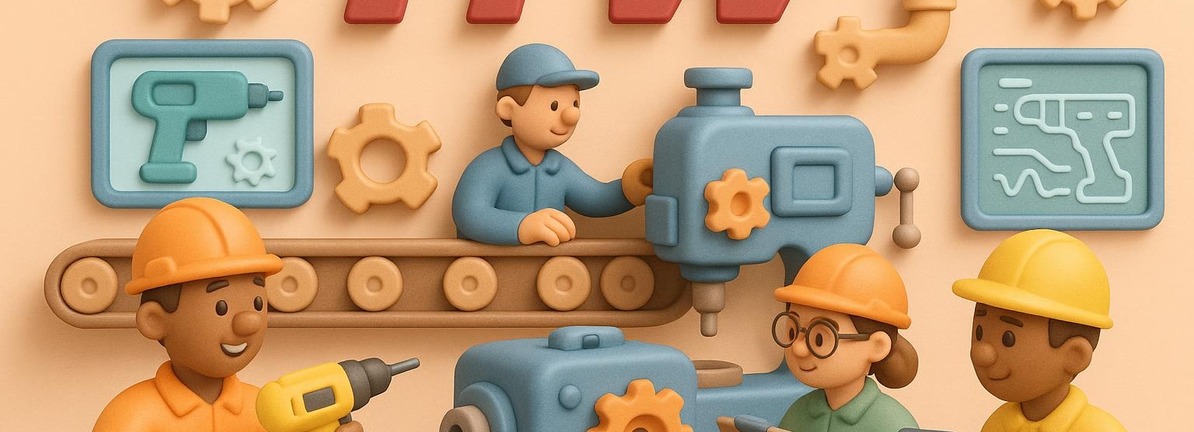Introduction
Allergic rhinitis (AR) is a seasonal or perennial inflammatory condition of the nasal mucosa that not only affects breathing, but also the quality of life of those who experience it. Its prevalence has increased in recent decades.1,2 In Spain, approximately 10–15% of the population suffers from moderate to severe AR, highlighting its public health relevance.3,4
Previous studies highlight the significant burden of moderate to severe AR from both clinical and patient perspectives. Fromer et al5 and Cvetkovski et al6 emphasize the impact of AR on patients’ quality of life, including sleep disturbances, impaired daily functioning, and emotional distress. Additionally, the economic burden of AR, stemming from medical consultations, pharmacological treatments and possible loss of work productivity,7,8 requires a careful assessment of costs and benefits. Considering patients’ perceptions of treatment costs and effectiveness is crucial for identifying options that maximize benefits relative to cost while minimizing administrative complexity.3
Adherence to treatment is another important factor of AR management. Fox et al9 identified barriers to adherence, such as dissatisfaction with treatment efficacy, side effects, and complex regimens, underscoring the importance of patient-centered care. Adherence goes beyond simply following prescriptions; effective communication between the patient and healthcare professionals is key. Patient feedback regarding aspects such as administration form, frequency, and cost can help tailor treatments to improve adherence.10 Given the chronic nature of AR, a holistic approach is necessary to address its physical, emotional, and social impacts. Understanding how moderate to severe AR affects family, social and professional life can guide the development of more comprehensive and effective management strategies.11
Equity in access to care is also a fundamental principle in healthcare. By understanding patient experiences, we can better identify and address barriers to access, whether geographic, socioeconomic, or cultural. This informed approach facilitates more effective economic decisions and promotes more equitable disease management.12
The educational level of patients significantly affects the treatment of allergic rhinitis, as it largely determines their ability to understand the diagnosis, follow medical instructions, and adopt preventive measures against environmental triggers. Patients with higher education tend to show better adherence to treatment (whether pharmacological or immunological), communicate more effectively with healthcare professionals, and take a more active role in managing their condition, leading to improved clinical outcomes and quality of life. Therefore, it is essential to tailor medical information to the patient’s cultural and educational background to ensure effective and equitable therapeutic care.7
Thus, understanding patients’ expectations and needs regarding their treatment is essential in healthcare. A patient-centered perspective on moderate to severe AR and its treatment can enhance quality of life and improve overall healthcare outcomes. This approach is fundamental for achieving optimal results.13 The objective of the study was to comprehensively explore the experience of patients with moderate to severe allergic rhinitis, encompassing their quality of life, treatment adherence, and therapeutic perception, and to identify factors influencing clinical care to inform future improvements in therapeutic strategies.
Material and Methods
A mixed-methods study with an observational, descriptive, and cross-sectional design was carried out from January to May 2024, incorporating a quantitative component through an anonymous patient survey and a qualitative component through a focus group.
Study Population
The study participants were recruited through the Spanish Federation of Associations of Allergy and Respiratory Disease Patients (FENAER). Participants were required to meet the following inclusion criteria: a confirmed diagnosis of moderate to severe AR by a specialist or primary care physician, preferably supported by diagnostic tests such as prick tests or specific IgE; age of 18 years or older; a disease duration of at least one year, used as a pragmatic proxy for basic experience with the condition and likely exposure to different treatments, although detailed treatment history was not systematically collected at inclusion; current use of medications indicated for moderate to severe AR, including antihistamines, intranasal corticosteroids, or specific immunotherapy; a reported impact on daily life, such as sleep disturbances, impaired work or academic performance, social limitations, or emotional burden; willingness to complete the study survey or participate in the focus group; and signed informed consent to ensure compliance with ethical standards and data protection regulations.
AR were classified as moderate if patients exhibited one, two or three of the following symptoms: sleep disturbance, impairment of daily activity and/or sports, impairment of school or work tasks and if the symptoms are bothersome. And AR was classified as severe, if all four of the above symptoms were present.12
Patients were initially contacted by Email and telephone. The purpose of the study was explained to them and they were invited to participate in the study. Detailed information about the process, confidentiality and the importance of their participation was provided. Patients who agreed to participate received confirmation and further instructions.
A convenience sampling approach was used in collaboration with FENAER, which facilitated access to a broad and diverse pool of patients across different regions of Spain. While convenience sampling is inherently limited in its ability to ensure representativeness or control sample characteristics, particular attention was paid during recruitment to include patients of varying ages, genders, and disease durations. Thus, although the method itself does not guarantee balance, the combination of recruitment through a national patient federation and the deliberate effort to incorporate heterogeneity contributed to achieving an approximately balanced sample, thereby supporting the external validity of the study.
Representation from different regions covered by FENAER was guaranteed, along with diversity in socioeconomic and occupational backgrounds. This was achieved by leveraging the structure of FENAER, which includes multiple regional associations across Spain. These associations played an active role in disseminating the study invitation through various communication channels (such as mailing lists, social media, and newsletters) enabling outreach to patients from both urban and rural areas, and from different social and professional contexts. While no formal stratification was applied, this strategy was designed to enhance the heterogeneity of the sample despite the inherent limitations of convenience sampling.
For the focus group study, seven participants were selected based on their ability to express experiences clearly, diverse perspectives on adherence and treatment efficacy, varying degrees of disease impact on daily life, and commitment to active participation. These criteria were assessed during the initial contact phase, in which potential participants were briefly interviewed by telephone or Email to explore their interest in the study, their ability to articulate personal experiences, and their availability. Information provided in the preliminary survey responses, particularly regarding treatment satisfaction, adherence, and impact on daily life, was also considered to ensure a heterogeneous and information-rich group for qualitative exploration.
Quantitative Methodology: Survey Study
A structured online questionnaire was designed to collect quantitative data on patients’ sociodemographic characteristics, diagnosis and treatment history, quality of life, impact on daily activities, current treatments, subjective perception of treatment effectiveness, adherence to physician-prescribed therapies, frequency of medical visits, and additional comments. Example items included: “What is your level of education?” (sociodemographic section); “How long have you been receiving treatment for allergic rhinitis?” (diagnosis history); “Does allergic rhinitis affect your daily activities, leisure, and/or sports?” (impact on daily activities); “On a scale of 1 to 10, how would you describe your experience with your current treatment for allergic rhinitis?” (current treatments); “How would you describe your compliance with the treatment prescribed by your doctor?” (experience and adherence); and “How often do you have medical visits related to your allergic rhinitis?” (medical visits). All responses were anonymized to ensure confidentiality. Responses were anonymized to ensure confidentiality. Responses were anonymized to ensure confidentiality.
The study questions emerged from a comprehensive literature review and analysis of previous studies on the experience of patients with AR. Scientific articles, clinical reports and pathology surveys were examined to identify the most relevant areas and existing knowledge gaps. In addition, patient experience studies addressing key aspects such as efficacy and safety of treatments, quality of life, and impact on daily activities were considered.13–45
The final survey consisted of 56 questions of different types: multiple choice, rating scale, dichotomous, and closed and open-ended formats. Although some items addressed overlapping themes (eg, treatment cost), they were designed to capture different dimensions of the same concept, such as categorical perception versus perceived intensity. It is important to note that not all questionnaire items were included in the final analysis, and only those relevant to the objectives of the present manuscript were reported. Some quality of life questions were Likert-type questions based on a rating scale from 1 to 10, where 1 represents minimal impact on quality of life and 10 indicates significant impact. In the case of open-ended questions, responses were later grouped thematically for descriptive analysis, and their distribution is reflected in the results tables to illustrate patient-reported experiences in their own words. When participants left a question unanswered, the answer was coded as “Don’t know” for consistency in the analysis and presentation of results. The questionnaire is available in the Supplemental Material 1. The name “Study 3E” reflects the conceptual foundation of this research, based on three core dimensions of the patient role: Engaged, Empowered, and Experienced. These elements capture the participatory, informed, and experiential nature of patients in the management of allergic rhinitis and were used to guide the design and interpretation of the study.
Qualitative Methodology: Focus Group
To gain a deeper understanding of patients’ concerns, their justifications for specific behaviors or perceptions, and the potential solutions they propose for improving AR management, qualitative insights were obtained from focus group discussions. A specific guide of questions (Supplemental Material 2) was developed to facilitate an in-depth discussion of the treatment experience in moderate to severe AR, based on emerging themes from the reviewed literature described above.33 The reviewed literature includes a comprehensive view of allergic rhinitis, highlighting clinical and quality of life aspects, as well as a key update that can serve as a basis for structuring questions related to the disease and its implications.¹¹ Thus, the study questions were grounded in a solid theoretical and empirical context, allowing the findings to be better contextualised.
The focus group guide was organized into thematic blocks addressing patients’ experiences with specific treatments, the impact of treatment on daily life, perceived effectiveness, ease of use and administration, side effects, adherence to medical recommendations, satisfaction, and interactions with healthcare professionals. Sample questions included: “What treatments have you used, and what was your experience with them?”, “How does the treatment affect your daily life?”, “What challenges have you faced regarding adherence?”, “How would you describe the ease of use of delivery devices?”, and “What would you improve in current treatment approaches?” These domains allowed participants to express not only their personal experiences, but also their expectations and suggestions for improving allergic rhinitis management.
During the focus group meetings, which were conducted via videoconference, the moderator adopted a structured but flexible approach, following the question guide, allowing for deviations when relevant issues arose. Each session began with a brief introduction, explaining the objectives of the study and assuring participants of the confidentiality of their responses. An open and respectful atmosphere was fostered, encouraging all participants to share their experiences and opinions.
The moderator used active listening techniques and follow-up questions to probe participants’ responses, ensuring that all points of view were considered. The sessions were recorded with the consent of the participants and subsequently transcribed for analysis. The information obtained was grouped into thematic categories for ease of interpretation.
Data Processing
The qualitative variables of the survey were expressed as absolute frequency (n) and relative frequency (%), while the quantitative variables were presented as mean and standard deviation (SD). In the qualitative study, the recorded conversations were transcribed and the information was grouped into thematic sections, assessing the results, justification and solutions given by the patients in the different situations raised.
Ethical Considerations
This study was conducted in accordance with the principles of the Declaration of Helsinki. All participants provided informed consent prior to their inclusion, and the confidentiality and anonymity of their responses were guaranteed throughout the research process. The study was approved by the Ethics Committee of the University of Alicante (ref. UA-2024-02-26_2).
Results
A total of 75 patients responded to the survey (73 answered all the questions and 2 answered some of the questions). The mean age of the participants was 42.3 (SD21.7 years; range: 18–80), 65.3% (n=49) were women, 84% (n=63) had moderate rhinitis and 16% (n=12) severe; the mean time of treatment was 13 (SD12.7; range not available) years. With regard to educational level, 13.3% (n=10) had primary education, 20% (n=15) secondary education, 21.3% (n=16) had other qualifications and 45.3% (n=34) had a university degree.
Quality of Life and Impact on Daily Activities
The analysis of responses regarding quality of life reveals a wide range of patient experiences, from mild discomfort to a significant influence on overall well-being, highlighting the complexity of the issue and the importance of addressing diverse perspectives to deliver more personalized and effective care.
Fifty-four (72%) patients have experienced changes in the intensity of their symptoms since diagnosis and 69% (n=52) have had their daily activities, leisure and/or sports activities affected. Table 1 shows the mean values and standard deviations obtained in the questions on the impact of the disease on quality of life.
|
Table 1 Results of the Quality of Life Questions (Response Range for Each Item, Likert-Type Scales 1–10)
|
When asked whether they have experienced any AR-related traffic or work-related accidents, only two patients (2.7%) reported having experienced one. On the other hand, 72% (n=54) of patients feel supported by their social and work environment in relation to their health problem.
Current Treatments
Table 2 shows the results of the questions regarding their experience with their current treatment.
 |
Table 2 Results Obtained in Relation to Patient Treatment
|
Subjective Perception of Treatment
Table 3 presents the results on the subjective perception of the current treatment of the surveyed patients.
 |
Table 3 Results About the Subjective Perception of Treatment (Response Range for Questions Using Likert-Type Scales 1–10)
|
When asked if there are specific aspects of the device(s) that they would improve, 22 patients responded to the question, of these 10 indicated no need for improvements, 10 suggested changes, and two provided ambiguous response. The most common suggestion was increasing the duration of the packs (n = 3), followed by greater ease of use, smaller size (n = 2), full coverage by social security, fewer daily doses, enhanced effectiveness, elimination of daily administration, and the option of an orodispersible tablet (n = 1 each).
Regarding overall satisfaction, 73.3% (n = 55) of patients responded affirmatively to the question “Are you generally satisfied with your treatment?” (item 32 of the questionnaire). Among these, 33.3% of the total sample (n = 25) stated they had considered asking their doctor to change the treatment (item 33). Their reasons (item 34) were primarily related to treatment efficacy (n = 27, 73%), followed by ease of use (n = 6, 16.2%), safety concerns (n = 1, 2.7%), and other reasons (n = 3, 8.1%). These results derive from a different set of questions than the Likert-scale item on satisfaction reported in Table 3 and are therefore presented narratively in this section to reflect the layered approach used to assess treatment satisfaction.
Experience and Adherence to Treatment Prescribed by the Physician
Table 4 presents the questions on aspects of treatment that may improve adherence and compliance to treatment.
 |
Table 4 Aspects of Treatment That, According to the Patient’s Opinion, Could Improve Their Quality of Life and Adherence to Treatment
|
Cost and Medical Visits
When analysing the cost of treatment, 10.7% of patients (n = 8) considered it to be very high, 16% (n = 12) high, 44% (n = 33) neither very high nor very low, 24% (n = 18) low and 2.8% (n = 2) very low (two study participants did not comment on this). The mean score obtained on the question How expensive would you rate your current treatment in terms of price was 5.9 (SD 2.4). On the question whether, with equal or superior efficacy and safety, would you like to see more affordable, less expensive options available, the percentage of affirmative answers was 95.9% (n=72). The frequency of physician visits by the AR patients surveyed was: 9.3% once a month (n = 7), 8% once every two months (n = 6), 6.7% once every three months (n = 5), 5.3% once every four months (n = 4), 2.7% once every five months (n = 2), 22.7% once every six months (n = 17), 1.4% once every seven months (n = 1), 2.7% once every eight months (n = 2), 1,4% once every nine months (n = 1), 1,4% once every 10 months (n = 1) and 36% once over 10 months (n = 27).
Regarding the information they receive from their doctor about their disease, 29.3% of patients believe it is very useful (n = 22), 29.3% useful (n = 22), 26.7% moderately useful (n = 20), 9.3% not very useful (n = 7) and 2.7% not at all useful (n = 2). In addition, the vast majority, 82.7% of patients (n = 62), say they would like to receive more information or education about AR and treatment options. Only 10.7% of patients (n = 8) use apps or digital health-related technology to manage and monitor their AR or treatment. Of these, three stated that their experience of treatment with such technology is very positive, for three it is positive, one neither positive nor negative and one very negative. 76% (n=57) of patients responded that they would be willing to participate in future studies related to AR and its treatments.
Qualitative Study (Focus Group): Key Challenges
The qualitative study identified 15 key themes related to the experiences and challenges faced by seven patients with moderate to severe allergic rhinitis. These themes, summarized in the following tables, provide insights into patients’ concerns, their underlying justifications, and the solutions they propose for improving disease management.
Table 5 presents the main problems reported by patients, along with their justifications and possible solutions. These issues include the complexity of allergic rhinitis, treatment-related side effects, the need for individualized therapies, and challenges in the relationship with healthcare professionals. The patients’ perspectives highlight the persistent nature of symptoms, the burden of multiple treatments, and concerns regarding accessibility and quality of care. The proposed solutions emphasize the importance of a more patient-centered approach, continuous treatment reassessment, and strategies to enhance adherence and comfort.
 |
Table 5 Results of the Qualitative Study: Key Challenges in Allergic Rhinitis Management: Patients’ Concerns, Justifications, and Proposed Solutions
|
Qualitative Study (Focus Group): Facilitators for Improved Treatment Experience
Table 6 focuses on facilitators that could improve treatment experiences and outcomes, providing justifications and strategies for implementation. Patients highlighted key areas such as the need for better treatment delivery, device optimization, innovations in administration methods, and the role of complementary therapies. Additionally, psychological and emotional factors were recognized as influential in treatment adherence, reinforcing the need for holistic management. The proposed strategies include patient education programs, innovations in treatment devices, and stronger support from patient organizations to enhance information access and emotional well-being.
 |
Table 6 Results of the Qualitative Study: Facilitators for Improved Treatment Experience, Justifications and Strategies for Implementation
|
The focus group discussions provided rich insight into the daily realities of living with moderate to severe allergic rhinitis. Patients described the condition as persistent and multifaceted, often requiring continuous adjustments to treatment. As one participant noted: “It’s not always easy to find the right balance — some days are better than others, and it takes time to learn how to manage it.”
Participants expressed appreciation for available treatments but also mentioned areas for improvement, particularly regarding administration. For example: “The nasal sprays help, but sometimes I wonder if I’m using them correctly — it would be useful to have clearer instructions.” This reflects the importance of patient education and support to optimize treatment effectiveness.
The emotional and psychological aspects of treatment adherence were also raised:
Sticking to the routine can be hard, especially when you don’t feel immediate results. But I try to follow it because I know it’s part of managing the condition.
Such reflections highlight the need for a holistic approach that takes into account motivation, wellbeing, and continuity of care.
Finally, the support of patient organisations was viewed positively: “I find it reassuring to have access to reliable information and to hear from others who go through similar situations.” This underscores the potential of these organisations in reinforcing patient confidence and adherence.
Discussion
The findings of this study highlight the significant impact of moderate to severe AR on patients’ daily lives, treatment experiences, and adherence. Nearly three out of four patients reported changes in symptom intensity over time, with more than two-thirds experiencing disruptions in daily activities, leisure, and work performance. Despite mean quality of life scores below 5 on a 1–10 scale, the cumulative burden across domains, especially emotional well-being, work or academic performance, and concentration, indicates a moderate overall impact. This aligns with the 69% of participants who reported interference in daily life and underscores the need to assess AR beyond symptom severity, considering its broader functional consequences. Two out of three patients use antihistamines and nasal corticosteroids, yet nearly one in five reported significant side effects, with some not communicating these to their healthcare providers. While more than half of the patients expected complete symptom resolution, adherence remained a challenge, with one in five acknowledging non-compliance, mainly due to forgetfulness and perceived treatment effectiveness. Additionally, three out of five patients preferred a simpler administration method, and nearly half of them were willing to accept higher costs for increased convenience.
The qualitative findings provided deeper insights into these challenges, emphasizing the complexity of AR management, the burden of persistent symptoms, and the need for continuous treatment reassessment. One in three patients highlighted the importance of improved communication with healthcare professionals and a greater focus on shared decision-making. Key facilitators for better adherence included optimized treatment administration, patient education, and psychological support. Additionally, four out of five patients expressed a desire for more information on AR and its treatment, while patient organizations were recognized as essential sources of reliable information and emotional support. These results underscore the need for patient-centered strategies that enhance treatment efficacy, simplify administration, and improve adherence through personalized approaches.
The findings of this study align with and expand upon existing research on AR management, particularly in terms of patient expectations, treatment adherence, and the perceived effectiveness of available therapies. The patient population in the present study—predominantly middle-aged adults, with a higher proportion of women, mostly moderate AR, long-standing AR, and a university-level education—shares demographic similarities with prior studies that have examined AR burden and treatment patterns.
Our results indicate that seven out of ten patients reported variations in symptom intensity over time, with more than two-thirds experiencing a significant impact on daily activities, leisure, and work performance. This burden is consistent with findings from Canonica et al7 who highlighted the high prevalence of moderate to severe disease and the considerable impairment in health-related quality of life. Furthermore, similar to previous studies,5,6 our study reinforces the idea that AR remains a largely persistent condition, with patients continuing to experience symptoms despite ongoing treatment.
In terms of treatment, approximately 1 out of every 2 study patients prioritized symptom resolution as their primary expectation, with antihistamines and intranasal corticosteroids being the most commonly used therapies. This is in line with Baena-Cagnani et al,33 who reported that these two drug classes were the preferred options among both patients and physicians in multiple countries. However, our findings also indicate that one in five patients experienced significant side effects, a factor that Hellings et al15 identified as a key concern, particularly regarding nasal corticosteroids. Importantly, all patients who experienced side effects in our study reported them to their healthcare providers, which contrasts with Cvetkovski et al,6 who found that many patients self-manage their AR without professional follow-up, often relying on fragmented and outdated information.
In terms of experience, most patients rated their treatment positively, with nearly 80% finding the dosage comfortable, over half using a single device, and seven out of ten expressing satisfaction, although one in three considered changing treatment due to perceived efficacy (subjective perception expressed by the patient). Fromer et al34 found that prescription intranasal steroid users perceived them as more beneficial, yet nearly half of AR sufferers desired more effective over-the-counter options, reflecting ongoing treatment dissatisfaction.
In regard to the quality of life improvement, three out of ten patients reported a significant improvement in their quality of life after starting treatment, while five out of ten experienced moderate improvement, and more than seven out of ten noted a reduction in complications. Canonica et al7 demonstrated that AR has a significant impact on health-related quality of life, correlating disease severity with impairment in daily life.
Adherence remains a major challenge in AR management, with our study revealing that one in five patients do not fully comply with prescribed treatment, primarily due to forgetfulness and perceived lack of efficacy. This finding is consistent with Fox et al,9 who emphasized that logistical barriers, such as messiness and time consumption, and the need for memory triggers are critical factors influencing adherence. Similarly, Fromer et al34 noted that many AR sufferers initially self-manage their symptoms with over-the-counter medications and only seek medical advice when symptoms worsen, suggesting that inadequate education and communication contribute to inconsistent treatment adherence. On the other hand, we found that the positive factor that most influences compliance is the ease of administration. It is also important to note that if these patients do not adhere to the treatment for whatever reason, 7 out of 10 of them occasionally stop taking it. Given that nearly half of chronic disease patients in Spain do not follow treatment properly, it is crucial for healthcare professionals to monitor adherence. Poor patient awareness and lack of familiarity as key barriers to adherence, therefore healthcare provider-patient communication is important.5
In addition to logistical and perceptual factors, another relevant factor identified in this study is the educational level of patients. It is likely that the higher health literacy contributed to their ability to understand the disease and treatment instructions, communicate effectively with healthcare providers, and engage in proactive disease management. Previous studies have shown that patients with higher education tend to adhere more consistently to pharmacological therapies and report greater satisfaction with their care.7 These findings highlight the importance of adapting clinical communication and education strategies to the patient’s educational background to ensure equitable access to care and optimal health outcomes.
Six out of ten patients preferred a treatment that was easier to administer, even if it was more expensive, with four out of ten willing to pay up to 30% more. This aligns with Hellings et al,15 who found that a significant number of patients preferred nasal sprays over oral treatments and favored combination therapy over monotherapy, indicating a preference for more convenient administration methods. Additionally, the willingness of patients to pay more for greater convenience suggests that treatment adherence could be improved by optimizing delivery methods, a point echoed in Fox et al,9 who emphasized the role of patient-centered interventions in addressing logistical obstacles to medication use.
When analysing the costs of treatment, three out of ten patients considered treatment costs high, while the most common perception was that they were moderate, with more than half visiting their doctor at least once every ten months. Six out of ten patients found the information from their doctor useful, yet over eight out of ten expressed a desire for more education on AR and its treatment options. Cvetkovski et al6 demonstrated that AR patients often rely on fragmented and outdated information, underscoring the need for structured self-management strategies in primary care.
The qualitative findings supported the quantitative results, identifying 15 key aspects of AR management, including disease complexity, patient-provider relationships, treatment reassessment, diversification and individualisation of treatments, assessment of side effects and improvement and innovation in treatment delivery and devices, as well as the importance of training, complementary therapies, psychological and emotional aspects, adherence and the role of patient associations.
Solutions recommended by patients were based on mixed intervention strategies, similar to those recommended to improve adherence in clinical practice.10 They include personalized therapeutic strategies, shared decision-making, constant reassessment, treatment innovation, management of side effects, improvement of efficiency and comfort of therapies, patient education, complementary therapies, attention to psychological and emotional aspects, holistic approaches to improve adherence, and the essential role of AR patient associations.
A key strength of this study is its mixed-methods design, which integrates quantitative and qualitative approaches to provide a comprehensive understanding of the patient experience in moderate to severe AR. This combination offers a more holistic perspective on treatment effectiveness, adherence, and quality of life, distinguishing it from previous studies that focused on isolated aspects. The collaboration with FENAER ensured access to a well-defined patient population, while the structured questionnaire, based on a thorough literature review, allowed for a systematic assessment of key variables. Additionally, the qualitative component provided deeper insights into patient concerns and expectations, enriching the interpretation of the quantitative findings. However, the study has certain limitations, the small sample size of the focus group may limit the generalizability of qualitative results, and the cross-sectional design does not allow for long-term evaluation of treatment adherence or disease progression. The recruitment through a patient organization may introduce selection bias, and the reliance on self-reported data carries the risk of recall or social desirability bias. Additionally, the use of convenience sampling, which, despite efforts to ensure diversity in age, gender, and disease duration, does not guarantee full representativeness of the broader population with moderate to severe AR. Therefore, caution should be exercised when generalizing the findings to other patient populations.
Healthcare professionals should actively involve patients in treatment decisions, address adherence barriers, and improve patient education to reduce reliance on outdated or fragmented information. From a research perspective, the mixed-methods approach used in this study underscores the importance of capturing patient experiences in chronic disease management. Future studies should include larger, more diverse populations and longitudinal designs to assess adherence and treatment effectiveness over time. Additionally, further research on digital tools and patient-friendly treatment formulations could help improve long-term AR management and health outcomes.
Conclusions
The relevance of the results shows that the comprehensive integration of patient-reported outcomes and lived experiences, contextualised within the Spanish setting, provides new insights that can inform more patient-centred approaches to allergic rhinitis management.
This study highlights the need for a patient-centered approach in the management of moderate to severe AR, emphasizing the importance of treatment convenience, adherence, and patient education. Beyond effectiveness, factors such as ease of administration, side effects, and communication with healthcare providers significantly influence patient satisfaction and adherence. Optimizing treatment delivery and enhancing patient involvement in decision-making could improve long-term outcomes and quality of life in AR management.
Funding
Study carried out with the support of Menarini Laboratories.
Disclosure
The authors report no conflicts of interest in this work.
References
1. Bauchau V, Durham SR. Prevalence and rate of diagnosis of allergic rhinitis in Europe. European Respiratory Journal. 2004;24(5):758–764. doi:10.1183/09031936.04.00013904
2. Canonica GW, Mullol J, Pradalier A, Didier A. Patient perceptions of allergic rhinitis and quality of life: findings from a survey conducted in Europe and the United States. World Allergy Organization Journal. 2008;1(9):138–144. doi:10.1097/WOX.0b013e3181865faf
3. Sociedad Española de Alergología e Inmunología Clínica. ‘Estudio FERIN: farmacoeconomía de la rinitis’. Portal SEAIC. 2011. Available from: https://www.seaic.org/inicio/noticias-general/estudio-ferin-farmacoeconomia-de-la-rinitis.html. Accessed October 15, 2025.
4. Demoly P, Bossé I, Maigret P. Perception and control of allergic rhinitis in primary care. NPJ Primary Care Respiratory Medicine. 2020;30(1):37. doi:10.1038/s41533-020-00195-8
5. Fromer LM, Ortiz G, Ryan SF, Stoloff SW.Insights on allergic rhinitis from the patient perspective. J Fam Pract. 2012;61(2 Suppl):S16–22.
6. Cvetkovski B, Kritikos V, Tan R, et al. A qualitative investigation of the allergic rhinitis network from the perspective of the patient. NPJ Prim Care Respir Med. 2019;29(1):35. PMID: 31537804; PMCID: PMC6753105. doi:10.1038/s41533-019-0147-5
7. Canonica GW, Bousquet J, Mullol J, Scadding GK, Virchow JC. A survey of the burden of allergic rhinitis in Europe. Allergy. 2007;62(Suppl 85):17–25. PMID: 17927674. doi:10.1111/j.1398-9995.2007.01549.x
8. Schoenwetter WF, Dupclay L, Appajosyula S, Botteman MF, Pashos CL. Economic impact and quality-of-life burden of allergic rhinitis. Curr Med Res Opin. 2004;20(3):305–317. PMID: 15025839. doi:10.1185/030079903125003053
9. Fox MG, Cass LM, Sykes KJ, et al. Factors affecting adherence to intranasal treatment for allergic rhinitis: a qualitative study. Laryngoscope Investig Otolaryngol. 2022;8(1):40–45. doi:10.1002/lio2.986
10. Lorenzo A, et al. Libro Blanco de la adherencia en España. OAT Observatorio. ISBN OAT: 978-84-09-47302-1, ISBN Weber: 978-84-124939-4-8. 2021. Available from: https://www.oatobservatorio.com/wp-content/uploads/2023/02/17.20220404.Proy-Adher.LB_Version-digital-OK.pdf. Accessed October 15, 2025.
11. Aristizabal MS, Martínez FM, Ropero JY, García GJ, Torres MA. Rinitis alérgica en el mundo moderno. Sci Educ Med J. 2021;2(1):1
12. Soler J, Fernández MJ, Gérvas J. Seminario de Innovación 2015: la equidad en la consulta clínica. Propuestas a pacientes, profesionales, gestores y políticos para limitar la discriminación. Revista de Calidad Asistencial. 2015;30(3):108–116. doi:10.1016/j.cali.2015.02.004
13. De la Hoz B, Colás C, Rodríguez Rodríguez M, Freedom G. Calidad de vida en pacientes con rinitis alérgica: estudio comparativo con la hipertensión arterial en el ámbito de atención primaria. Anales del Sistema Sanitario de Navarra. 2009;32(2):169–181. doi:10.23938/ASSN.0157
14. Storms W, Meltzer EO, Nathan RA, John C. Seiner, Allergic rhinitis: the patient’s perspective. Journal of Allergy and Clinical Immunology. 1997;99(6):S825–S828. doi:10.1016/S0091-6749(97)80043-7
15. Hellings PW, Dobbels F, Denhaerynck K, Piessens M, Ceuppens JL, De Geest S. Explorative study on patient’s perceived knowledge level, expectations, preferences and fear of side effects for treatment for allergic rhinitis. Clinical and Translational Allergy. 2012;2(1):9. doi:10.1186/2045-7022-2-9
16. Bousquet J, Schünemann HJ, Togias A, et al. Next-generation Allergic Rhinitis and Its Impact on Asthma (ARIA) guidelines for allergic rhinitis based on Grading of Recommendations Assessment, Development and Evaluation (GRADE) and real-world evidence. Journal of Allergy and Clinical Immunology. 2020;145(1):70–80.e3. doi:10.1016/j.jaci.2019.06.049
17. Calvo ET. ‘Rinitis, una comorbilidad frecuente en pacientes con asma’. 2023 Available from: https://www.livemed.in/es/blog/rinitis-una-cormobilidad-frecuente-en-pacientes-con-asma/. Accessed October 15, 2025.
18. Juniper EF, Guyatt GH, Griffith LE, Ferrie PJ. Desarrollo y prueba de una nueva medida del estado de salud para ensayos clínicos en rinoconjuntivitis. Journal of Allergy and Clinical Immunology. 1991;21:843–845.
19. Juniper EF, Guyatt GH, Andersson B, Ferrie PJ. Comparación de budesonida en polvo y aerosolizada en perennial rhinitis: validación del cuestionario de calidad de vida de rinitis. Annals of Allergy. 1993;70(3):225–230.
20. García-Marcos L, et al. (International Study of Asthma and Allergies in Childhood (ISAAC). Aims and methods of the Isaac Study (International Study of asthma and allergy in childhood). Anales del Sistema Sanitario de Navarra. 2009;20(1):57–69. doi:10.23938/assn.0598.
21. Soler R, de la Hoz B, Badia X, et al. Validación de la versión española del cuestionario de calidad de vida para pacientes con rinoconjuntivitis. Revista Clínica Española. 2004;204(3):131–138. doi:10.1016/S0014-2565(04)71417-4
22. Valero A, Ferrer M, Sastre J. A new criterion by which to discriminate between patients with moderate allergic rhinitis and patients with severe allergic rhinitis based on the Allergic Rhinitis and Its Impact on Asthma severity items. Journal of Allergy and Clinical Immunology. 2007;120(2):359–365. doi:10.1016/j.jaci.2007.04.006
23. Nathan RA, Dalal AA, Stanford RH, et al. Qualitative development of the Rhinitis Control Assessment Test (RCAT), an instrument for evaluating rhinitis symptom control. The Patient. 2010;3(2):91–99. doi:10.2165/11318410-000000000-00000
24. Schatz M, Meltzer EO, Nathan R, et al. Validación psicométrica de la prueba de evaluación del control de la rinitis: un breve instrumento completado por el paciente para evaluar el control de los síntomas de la rinitis. Annals of Allergy, Asthma & Immunology. 2010;104(2):118–124. doi:10.1016/j.anai.2009.11.063
25. Valero A, Izquierdo I, Sastre J, et al. ESPRINT-15 questionnaire (Spanish version): reference values according to disease severity using both the original and the modified ARIA classifications. Journal of Investigational Allergology and Clinical Immunology. 2013;23(1):14–19.
26. Mancilla-Hernández E, Medina-ávalos MA, Osorio-Escamilla RE. Validación de un cuestionario diagnóstico de rinitis alérgica para estudios epidemiológicos. Revista Alergia México. 2014;61(3):153–161. doi:10.29262/ram.v61i3.40
27. Fernandes PH, Matsumoto F, Solé D, Wandalsen GF. Translation into Portuguese and validation of the Rhinitis Control Assessment Test (RCAT) questionnaire. Brazilian Journal of Otorhinolaryngology. 2016;82(6):674–679. doi:10.1016/j.bjorl.2015.12.011
28. Pagès-Puigdemont N, Valverde-Merino MI. Métodos para medir la adherencia terapéutica. Ars Pharmaceutica. 2018;59(3):163–172. doi:10.30827/ars.v59i3.7387
29. Wise SK. International Consensus Statement on Allergy and Rhinology: allergic Rhinitis. International Forum of Allergy & Rhinology. 2018;8:108–352.
30. Mancilla-Hernández E, Barnica ARH. Cuestionarios para diagnóstico de asma y rinitis alérgica: estudios de prevalencia y del grado de asociación de los síntomas con rinitis alérgica y asma. Revista alergia México. 2018;65(2):140–147. doi:10.29262/ram.v65i2.330
31. Komnos ID, Michali MC, Asimakopoulos AD, Basiari LV, Kastanioudakis IG. The effect of allergic rhinitis on quality of life in patients suffering from the disease: a case control study. International Journal of Otolaryngology and Head & Neck Surgery. 2019;8(4):121–131. doi:10.4236/ijohns.2019.84014
32. Del Cuvillo A, Sastre J, Colás C, Navarro AM, Mullol J, Valero A. Adaptation to Spanish and validation of the rhinitis control assessment test questionnaire. Journal of Investigational Allergology and Clinical Immunology. 2020;30(3):175–181. doi:10.18176/jiaci.0420
33. Brozek JL, Bousquet J, Baena-Cagnani CE, et al. Global Allergy and Asthma European Network, Grading of Recommendations Assessment, Development and Evaluation Working Group. Allergic Rhinitis and its Impact on Asthma (ARIA) guidelines: 2010 revision. J Allergy Clin Immunol. 2010;126(3):466–476. PMID: 20816182. doi:10.1016/j.jaci.2010.06.047
34. Fromer LM, Blaiss MS, Jacob-Nara JA, Long RM, Mannion KM, Lauersen LA. Current Allergic Rhinitis Experiences Survey (CARES): consumers’ awareness, attitudes and practices. Allergy Asthma Proc. 2014;35(4):307–315. PMID: 24992550. doi:10.2500/aap.2014.35.3766
35. Valero A, Del Cuvillo A, Navarro AM, Colás C, Sastre J, Mullol J. Validation of the ARIA items to assess allergic rhinitis control (ARIA-C). Allergy. 2020;75(11):2964–2966. doi:10.1111/all.14418
36. Valero Santiago AL, Ramírez Hernández M, Florido López JF, et al. Avances en el diagnóstico y tratamiento de las enfermedades alérgicas. Alcántara Villar M Edited by. Universidad Internacional de Andalucía; 2022.
37. García-Avilés MC. ‘Rinitis Alérgica’. 2023. Available from: https://www.livemed.in/es/blog/rinitis-una-cormobilidad-frecuente-en-pacientes-con-asma/. Accessed October 15, 2025.
38. Sociedad Española de Alergología e Inmunología Clínica, SEAIC. ‘ESPRINT’. Portal SEAIC. 2024. Available from: https://www.seaic.org/inicio/esprint. Accessed October 15, 2025.
39. Del Cuvillo Bernal A, Tucciarone M. ‘Valoración y manejo del paciente con rinitis, rinosinusitis y poliposis’, Manual de Neumología y Cirugía Torácica, 4th edn. n.d.. Available at: https://www.neumosur.net/files/publicaciones/manual_4_edicion/21-_Valoracion_y_manejo_del_paciente_con_rinitis_rinosinusitis_y_poliposis.pdf. Accessed October 15, 2025.
40. Bousquet J, Khaltaev N, Cruz AA, et al. ARIA (Allergic Rhinitis and its Impact on Asthma) Guidelines. Allergy. 2008;63(Suppl. 86):8–160. doi:10.1111/j.1398-9995.2007.01620.x
41. Wang K, Wang C, Xi L, et al. A randomized controlled trial to assess adherence to allergic rhinitis treatment following a daily short message service (SMS) via the mobile phone. International Archives of Allergy and Immunology. 2014;163(1):51–58. doi:10.1159/000356317
42. Bender BG. Motivating patient adherence to allergic rhinitis treatments. Current Allergy and Asthma Reports. 2015;15(3):10. doi:10.1007/s11882-014-0507-8
43. Menditto E, Costa E, Midão L, et al. ‘Adherence to treatment in allergic rhinitis using mobile technology. The MASK Study’. Clinical and Experimental Allergy. 2019;49(4):442–460. doi:10.1111/cea.13333
44. Steven GC. Shared decision making in allergic rhinitis: an approach to the patient. Annals of Allergy, Asthma & Immunology. 2020;125(3):268–272. doi:10.1016/j.anai.2020.06.032
45. Ricard N, Kind P, Christian S, Jensen M, Stewart J. Link between patient preferences and treatment outcomes in seasonal allergic rhinitis: an empiric investigation. Clinical Therapeutics. 1999;21(1):268–277. doi:10.1016/S0149-2918(00)88284-3














